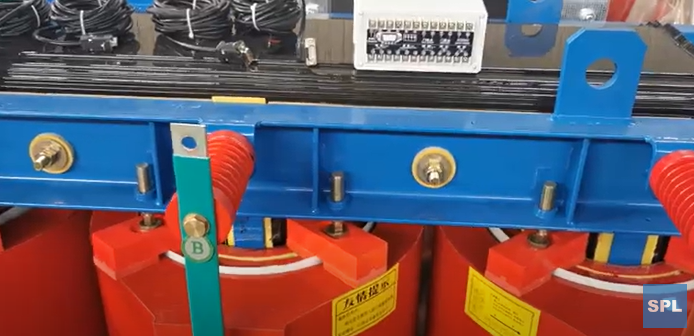Table of Contents
Differences Between Dry Type and Liquid Filled Transformers
Transformers are essential components in electrical systems, as they help to regulate voltage Levels and ensure the safe and efficient distribution of electricity. When it comes to transformers, there are two main types: dry type and liquid filled. Each type has its own set of advantages and disadvantages, making it important for users to understand the differences between the two.
Dry type transformers, as the name suggests, do not use any liquid for cooling or insulation. Instead, they rely on air to dissipate heat and provide insulation. This makes them ideal for indoor applications where the use of liquid-filled transformers may not be practical. Dry type transformers are also known for their low maintenance requirements and high efficiency, making them a popular choice for many applications.
| model | Rating capacity (KVA) | Voltage combination(KV) | Off-load losses(W) | Load losses(W) | Off-load current (%) | Short-circuit impedance (%) |
| SC12-30 | 30 | 6,6.3,6.6,10,11/0.4 | 150 | 710 | 2.0 | 4.0 |
| SC12-50 | 50 | 6,6.3,6.6,10,11/0.4 | 215 | 1000 | 2.0 | 4.0 |
| SC12-80 | 80 | 6,6.3,6.6,10,11/0.4 | 295 | 1380 | 1.5 | 4.0 |
| SC12-100 | 100 | 6,6.3,6.6,10,11/0.4 | 320 | 1570 | 1.5 | 4.0 |
| SC12-125 | 125 | 6,6.3,6.6,10,11/0.4 | 375 | 1850 | 1.3 | 4.0 |
| SCB12-160 | 160 | 6,6.3,6.6,10,11/0.4 | 430 | 2130 | 1.3 | 4.0 |
| SCB12-200 | 200 | 6,6.3,6.6,10,11/0.4 | 495 | 2530 | 1.1 | 4.0 |
| SCB12-250 | 250 | 6,6.3,6.6,10,11/0.4 | 575 | 2760 | 1.1 | 4.0 |
| SCB12-315 | 315 | 6,6.3,6.6,10,11/0.4 | 705 | 3470 | 1.0 | 4.0 |
| SCB12-400 | 400 | 6,6.3,6.6,10,11/0.4 | 785 | 3990 | 1.0 | 4.0 |
| SCB12-500 | 500 | 6,6.3,6.6,10,11/0.4 | 930 | 4880 | 1.0 | 4.0 |
| SCB12-630 | 630 | 6,6.3,6.6,10,11/0.4 | 1070 | 5880 | 0.85 | 4.0 |
| SCB12-630 | 630 | 6,6.3,6.6,10,11/0.4 | 1040 | 5960 | 0.85 | 6.0 |
| SCB12-800 | 800 | 6,6.3,6.6,10,11/0.4 | 1210 | 6960 | 0.85 | 6.0 |
| SCB12-1000 | 1000 | 6,6.3,6.6,10,11/0.4 | 1410 | 8130 | 0.85 | 6.0 |
| SCB12-1250 | 1250 | 6,6.3,6.6,10,11/0.4 | 1670 | 9690 | 0.85 | 6.0 |
| SCB12-1600 | 1600 | 6,6.3,6.6,10,11/0.4 | 1960 | 11700 | 0.85 | 6.0 |
| SCB12-2000 | 2000 | 6,6.3,6.6,10,11/0.4 | 2440 | 14400 | 0.7 | 6.0 |
| SCB12-2500 | 2500 | 6,6.3,6.6,10,11/0.4 | 2880 | 17100 | 0.7 | 6.0 |
On the other hand, liquid-filled transformers use oil or other types of liquid as a cooling and insulation medium. This allows them to handle higher power levels and provide better insulation compared to dry type transformers. Liquid-filled transformers are commonly used in outdoor applications where the transformer may be exposed to harsh environmental conditions. However, they do require regular maintenance to ensure the oil is clean and free of contaminants.

One of the key differences between dry type and liquid-filled transformers is their cost. Dry type transformers are generally more expensive upfront compared to liquid-filled transformers. However, they tend to have lower maintenance costs over the long term, making them a cost-effective option for many users. Liquid-filled transformers, on the other hand, may have lower initial costs but can be more expensive to maintain and operate in the long run.
Another important difference between dry type and liquid-filled transformers is their size and weight. Dry type transformers are typically smaller and lighter than liquid-filled transformers, making them easier to install and transport. This can be a significant advantage for applications where space is limited or where the transformer needs to be moved frequently. Liquid-filled transformers, on the other hand, are larger and heavier, requiring more space and equipment for installation.
In terms of efficiency, both dry type and liquid-filled transformers have their own advantages. Dry type transformers are known for their high efficiency, with some models achieving efficiency levels of up to 99%. This can result in lower energy costs and reduced environmental impact. Liquid-filled transformers also offer high efficiency levels, but may not be able to match the efficiency of dry type transformers in some cases.
When it comes to choosing between dry type and liquid-filled transformers, users should consider their specific application requirements and budget constraints. For indoor applications with limited space and low maintenance requirements, dry type transformers may be the best option. On the other hand, for outdoor applications with higher power levels and harsh environmental conditions, liquid-filled transformers may be more suitable.
In conclusion, both dry type and liquid-filled transformers have their own set of advantages and disadvantages. Understanding the differences between the two types can help users make an informed decision when selecting a transformer for their application. Whether you choose a dry type or liquid-filled transformer, it is important to work with a reputable manufacturer like a China company that offers high-quality products at competitive prices. By doing so, you can ensure that your electrical system operates efficiently and reliably for years to come.

